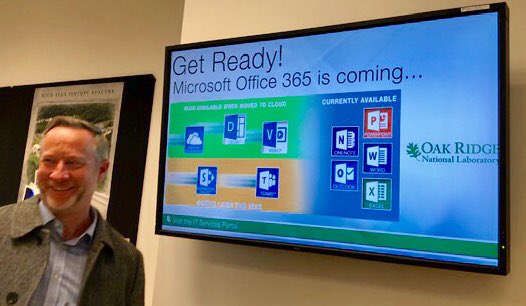
How Energy is using its $15M loan to get “over the hump” to move to cloud email
Max Everett, the Energy Department’s chief information officer, said about one-third to one-half of the department still needs to move their email to the clou...
The Energy Department has email in the cloud here, there and everywhere, but not all in one place.
That is why the $15 million the agency received from the Technology Modernization Fund (TMF) Board is critical to consolidate and modernize Energy’s collaboration tools.
Max Everett, the Energy Department’s chief information officer, said the loan from the TMF Board is providing the critical push to finally get Energy on one email platform.
“Historically over the years, quite frankly, email just grew up organically over time at the department. One of the results of that is we have a large number of email systems running around across the department. While headquarters and other areas have already moved onto cloud email, we had a number of different sites, for a lot of different reasons, some of them just geography, staffing, budget and other things, that had not made the move to cloud email,” Everett said on Ask the CIO. “That was one of the things when I walked in and when some of our other leadership walked in wanted something that really helps with collaboration, especially for a department that has so many different missions and has such a geographic spread, we thought that was important.”

Energy applied for and won the loan from the board, becoming only one of five agencies to find success with its business case. The department received its first increment of the loan, $4 million, in late calendar year 2018.
The board made a second set of awards in October to the Labor and Agriculture departments and the General Services Administration.
In its business case to the TMF Board, Energy said it currently operates 64 separate email systems, of which 45 are on-premises. Those 64 email systems provide services to more than 184,000 mailboxes across DOE.
Energy said it planned to move 19 on-premise email systems to the cloud last year so it needed the extra funding to “accelerate the implementation of the DOE enterprise cloud email, enabling the department to secure large scale operational benefits and costs savings by allowing the department to complete the consolidation, upgrade and migration effort for the 26 remaining on-premises systems.”
Everett said the extra money will help about one-third to one-half of the department get over the hump to move email to the cloud. He said even without the extra funding, from July to December, Energy moved about 6,000 email accounts to the cloud.
“For some of our more remote sites there were some technical challenges,” he said. “There were in certain places, when I say budget challenges, it’s what I would call technical debt. You have places that had made investment in cloud email systems and there is a cost to making that cut over. It’s a down payment, if you will. Sometimes for a smaller site that may be a significant amount of money so that itself becomes a bit of a challenge.”
Everett said the move is a two-step process. Some of the folks will be moving from an on-premise email system to one in their own cloud. And then, over time, Energy will further consolidate email systems in a federated cloud.
Energy said the end result of consolidating and moving email to the cloud will save money, increase efficiency, improve its cyber posture and decrease risk.
Everett said a secondary, but still important, benefit of winning the TMF loan is to change the agency’s culture in how they manage technology.
“We are trying to understand what is our cost per service, for email, for a desktop and for all these different services that we do. That is really how we should be managing our IT,” he said. “Cloud email is a really great one. As someone who in his previous life actually administered Exchange, I knew all the different costs you have for having servers, backups, third party tools, licensing and on and on. So when you move to cloud email, it really collapses a lot of those costs into some really basic understandable numbers of this is how much an email box costs. It’s a starter version of how you can get some of those costs shrunk down very quickly.”
Another big culture change for many of DOE’s sites was around giving up control of the system. Everett said there were offices that were used to controlling their email systems and may have been a little hesitant to move to the cloud.
“I think our leadership has given some clear expectation and direction that they want people to be forward leaning and moving to modern platforms,” he said. “One of the conversations we are having across the department is making sure that when everyone talks about what their cost for email is, we are talking about things apples-to-apples. For example, there is a license cost, but even if you are in the cloud, you will have administrative costs and you may have some third party security tools. All of those need to be part of your cost models. What we’ve seen across the department is there is a great variance. And if you look across the entire federal government, there is an enormous variance in those cost models. Some of them because people have just had different tools and costs. Some of them is because we didn’t always have the best handle on what the costs are. That is what TMF is trying to drive us toward is getting a better handle on the holistic costs for providing a mailbox or for providing a desktop.”
Copyright © 2024 Federal News Network. All rights reserved. This website is not intended for users located within the European Economic Area.
Jason Miller is executive editor of Federal News Network and directs news coverage on the people, policy and programs of the federal government.
Follow @jmillerWFED






